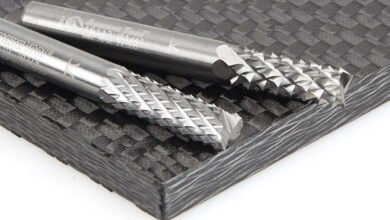How to Write a Contractor Proposal: A Guide

The home services market is set for impressive growth. US home services companies earned $211.71 billion in 2023. By 2031, this figure is forecast to grow to $893.18 billion. The home renovation market is expected to grow as well. It will add more than $100 billion between 2025 and 2029.
In this competitive market, it will be important to learn how to write contractor proposals that win jobs.
In this article, we’ll offer advice on how to do just that. You’ll learn the details of contractor proposals and all the information they need to include. We’ll show how to write a contractor proposal step-by-step. You’ll also see examples of how a proposal looks.
Our article will end with tips you can apply right now to start winning more bids for your home services company.
RELATED ARTICLE — What Is Project Management in Residential Construction?
What Is a Contractor Proposal?

A contractor proposal is a document that a contractor gives to a potential client when bidding for a job. It includes the following details:
- A list of services offered and their scope
- The amount of work and materials needed for the job
- Start and completion dates
- Conditions for the project, including payment due dates, warranties, and other legal information
- An itemized list of expenses, including labor, materials, and other expenses
A proposal puts all the information about the project in one document. It’s legally binding once it’s signed by the contractor and customer. This means you’re required to complete the work, and they’re required to pay for it.
Estimate vs. Bid vs. Proposal
A proposal is much more detailed than an estimate or a bid.
An estimate provides a general cost for a project. This is typically the first number a customer gets. You might think of it as a “ballpark figure” for the cost of the job.
A bid is more detailed and precise. It’s a formal offer to do the job for a specific price. It can include similar information to a proposal, but it is usually not as detailed. However, once the client accepts a bid, it is legally binding.
Why choose a proposal instead of a bid? A proposal provides the most detail, so it can protect you from problems. For instance, it can help you avoid scope creep. This occurs when the customer demands more work than you planned to provide for the price. A proposal has detailed information about the scope, so you can avoid such problems.
If you know how to write a contractor proposal with the right amount of detail, you can win more jobs. Customers see the price, but they can also see the services provided. In other words, proposals give you a chance to show the value you give clients.
You can compete on value and quality, not only on price.
RELATED ARTICLE — Remodeling Checklist for Contractors: What You Need to Know
What Your Contractor Proposal Needs to Include

The process of making a proposal starts with an estimate. From there, you can fine-tune the details until you have a completed proposal.
A good proposal should have the following elements:
- A cover page with your business name, license and insurance numbers, and contact information
- A general description of the project and the jobsite
- A detailed explanation of the scope of the work, including materials, labor hours, and equipment
- A list of exclusions (work that you will not do as part of the project)
- A timeline that explains when the job will start and when it will finish
- A list of milestones (for longer or larger jobs) and a completion date for each
- An itemized price quote that includes materials, labor, permits, and taxes
- An explanation of payment terms, saying when and how the client will pay for the work
- Details about warranties and guarantees for the work and materials
- Any additional terms and conditions for the work, such as penalties for non-payment and contingencies for delays
The final part of the proposal is a signature page. It includes information for both you and the client. There is a field for signatures at the bottom. Once you and the client sign, the proposal becomes legally binding.
RELATED ARTICLE — How to Become a Professional Construction Estimator
How to Write a Contractor Proposal: Key Stages

Think carefully about how you want to approach writing a contractor proposal. It is legally binding, so you don’t want to make mistakes. Once it’s signed, you’re locked into the pricing and scope of the project. A mistake could lead to losing money or time on the project. And if you can’t deliver what you promised on time, it could harm your reputation.
Since there’s a lot at stake, a methodical approach is best. You can create your proposal in stages to ensure you get everything right.
Do Your Research and Prep
The first step is to collect the necessary information about the job. If you get all the details upfront, you can focus on fine-tuning the proposal in the later stages.
This stage involves meeting with the client to hear about their expectations. Also, you can visit the jobsite to see if there are any issues. For instance, you can make sure your equipment will fit in their home. And you can check for any additional work that needs to be done. For example, an HVAC installer might look at gas and electrical supplies to see if they need to make changes before the installation.
Make a list of potential challenges that could make the job more complicated. Take photos and measurements of the jobsite. These can make ironing out the details easier when you write the formal proposal.
Finally, talk with the client about their budget and expectations. Clarify what they want and what they don’t want to be done.
Create a Draft of the Proposal
Start by creating an estimate, which gives you a clear picture of the project’s expected costs. Estimating software like Joist can make this step faster and more accurate by helping you track material costs, labor hours, and measurements. Once you’ve built a solid estimate, you can use it as the foundation for your contractor proposal.
The next step is to take the information from your estimate and draft the full proposal. As you build the draft, remember to:
- Check current material costs and subcontractor availability.
- Adjust the timeline to reflect realistic start and completion dates.
- Review local permitting requirements, add those details to your proposal, and include the related costs.
Once all the details are filled in, you can expand them into a general project description that sets the stage for the rest of the proposal.
RELATED ARTICLE — The Best Estimating and Invoicing Software for Contractors
Fine-Tune the Writing
The language you use and the text you include in the proposal are important for two reasons.
First, you want to make sure everything is clear. Don’t leave any room for misunderstandings that could lead to disagreements. To do this, you need to remove any unnecessary technical jargon. When it’s necessary, include technical descriptions in parentheses. For example, list materials with a clear description in plain English. Then, add technical details in parentheses.
“Grey square tiles (10″×12″ with matte finish, model #SM4015HEXXTMTLW)”
This will cover you both legally and when explaining the project to a customer.
Second, a proposal is your chance to stand out from competitors. You can add selling points and point out value in the document. You might include references from other customers who hired you for similar work. Also, you can include details about previous jobs that you completed.
Highlight warranties for labor and materials as well.
Why do this? The detail allowed in a contractor proposal helps you explain the value you provide. This can be helpful in convincing customers to choose your bid, even if it’s not the lowest-priced one.
Review and Add Final Touches
Grammar and spelling errors can make a proposal seem unprofessional. Be sure to check the text several times for such mistakes.
There are several ways to do this:
- Paste the text into a grammar-checking program and correct all the errors it finds.
- Put the proposal down for a few hours. Then come back to read it again with a fresh mind. This will help you spot any mistakes you missed before.
- Have another person read the proposal and make corrections.
In addition to checking the language, you should verify pricing and units for materials. Make sure your math is correct. One mistake can lead to an over- or underpriced bid that will lose you the job or cancel out your profits. It also pays to verify that prices of materials haven’t changed since your initial estimate.
It can be a good idea to have several sets of eyes look at the finished draft before you submit it. They can find smaller mistakes or point out language that isn’t clear.
Once you’re done with these exhaustive edits, it’s time to submit the proposal to the client.
Contractor Proposal Examples

Contractor proposals can look very different depending on the type of work being done. A remodeling project often requires a longer, more detailed proposal with a clear scope of work, itemized costs, and a project timeline.
In contrast, a repair or service job usually calls for a shorter, more straightforward proposal that focuses on parts, labor, and quick turnaround.
To show the difference, here are two examples:
Example #1: Bathroom Remodeling Project Proposal
Prepared for: (Client name and address)
Prepared by: (Your company name, address, and contact details)
Date:
Project Overview
(Company name) will remodel the main bathroom at (address). The project will include adding new tiles, a new shower, and a modernized design to improve the look and function of the bathroom.
Scope of Work
- Remove existing bathtub, tile, and wallpaper. Dispose of debris in an on-site dumpster.
- Install a new showerhead, shower door, drain, and shower floor.
- Lay new porcelain tiles on the floor and add grout.
- Apply new wallpaper to the walls.
Materials
- Showerhead: $50
- Shower door: $250
- Shower floor: $800
- Porcelain tiles: $400
- Wallpaper: $350
- Grout, adhesives, and additional materials: $100
- Labor: $1,600
Timeline
- Estimated start date: (Day, Month, Year)
- Estimated completion: (Day, Month, Year)
Payment Terms
Cost (labor and materials): $3,550 (labor + materials within allowance)
Payment schedule: 25% deposit, 25% when shower work is completed, 50% billed upon completion and final approval
Warranty
- There’s a 5-year warranty on labor.
- All manufacturers’ warranties apply to materials.
Signatures
By signing below, you accept this proposal and authorize (company name) to proceed with the bathroom remodel project.
Client signature: ___________ Date: _______ Contractor signature: ___________ Date: _______
Example #2: HVAC Repair Proposal
Prepared for: (Client name and address)
Prepared by: (Company name, address, license number, and contact details)
Date:
Project Overview
A technician from (company name) has inspected the HVAC system at (address) and determined that the system needs a new blower and evaporator coil. This proposal explains the repairs to restore the system to full working condition. The goal of the repairs is also to lower energy costs.
Scope of Work
- Confirm failure of blower motor and evaporator coil.
- Disconnect power and prepare the unit for repair.
- Install the blower motor (manufacturer-approved replacement part).
- Replace evaporator coil.
- Dispose of old parts.
- Test the system to ensure full functionality.
- Clean the work area.
Materials and Costs
- Blower motor: $400
- Labor: $200 (4 hrs @ $50/hr)
- Evaporator coil: $350
- Miscellaneous wiring, coolant, and lubricant: $150
Total cost: $1,100
Timeline
- Service date: Within 2 business days of acceptance
- Estimated repair time: 4 hours
Warranty
- Manufacturers’ warranties on parts replaced
- 1-year warranty on labor
Payment Terms
- 50% deposit ($550) due at time of scheduling
- Balance ($550) due upon completion
Signature
By signing below, you accept this proposal and will allow (company name) to proceed with the repair services listed above.
Client signature: ____________________ Date: _______ Contractor signature: _______________ Date: _______
FROM ONE OF OUR PARTNERS — How to Create Your Own Remodeling Proposal Template
5 Tips to Win More Work With Your Proposals

It can take time to learn how to write contractor proposals for your home services or remodeling niche. However, there are steps you can take right now, with your next proposals, to get started on the road to success:
- Rely on software for accurate estimates. Tools like Joist streamline estimating and ensure a comprehensive list of materials and measurements.
- Include the client’s specific requests in the project overview. This adds a personal touch. Clients will feel like you heard them and paid attention during the initial meeting.
- Highlight value. Mention goals like lower energy costs and advantages like long-lasting materials. This will help customers look beyond the cost. They’ll also consider the quality and peace of mind you can provide.
- Add your license number and insurance information. This brings professionalism and credibility to your proposal. You’ll immediately stand out from companies that don’t have this information.
- Use bullet points. Write a short paragraph for the project overview, but use bullet points for the other sections to make the proposal easier to read.













